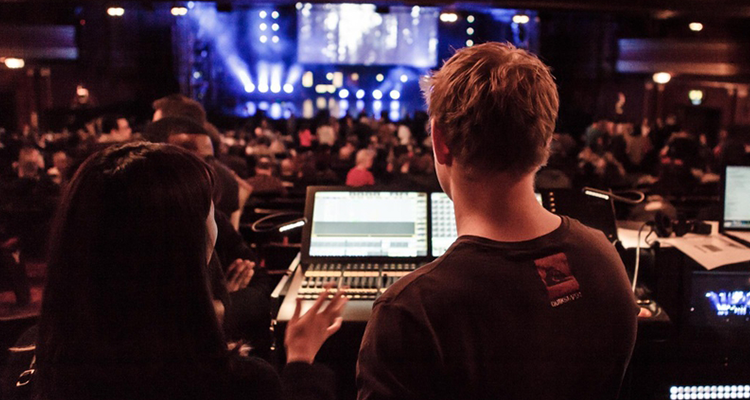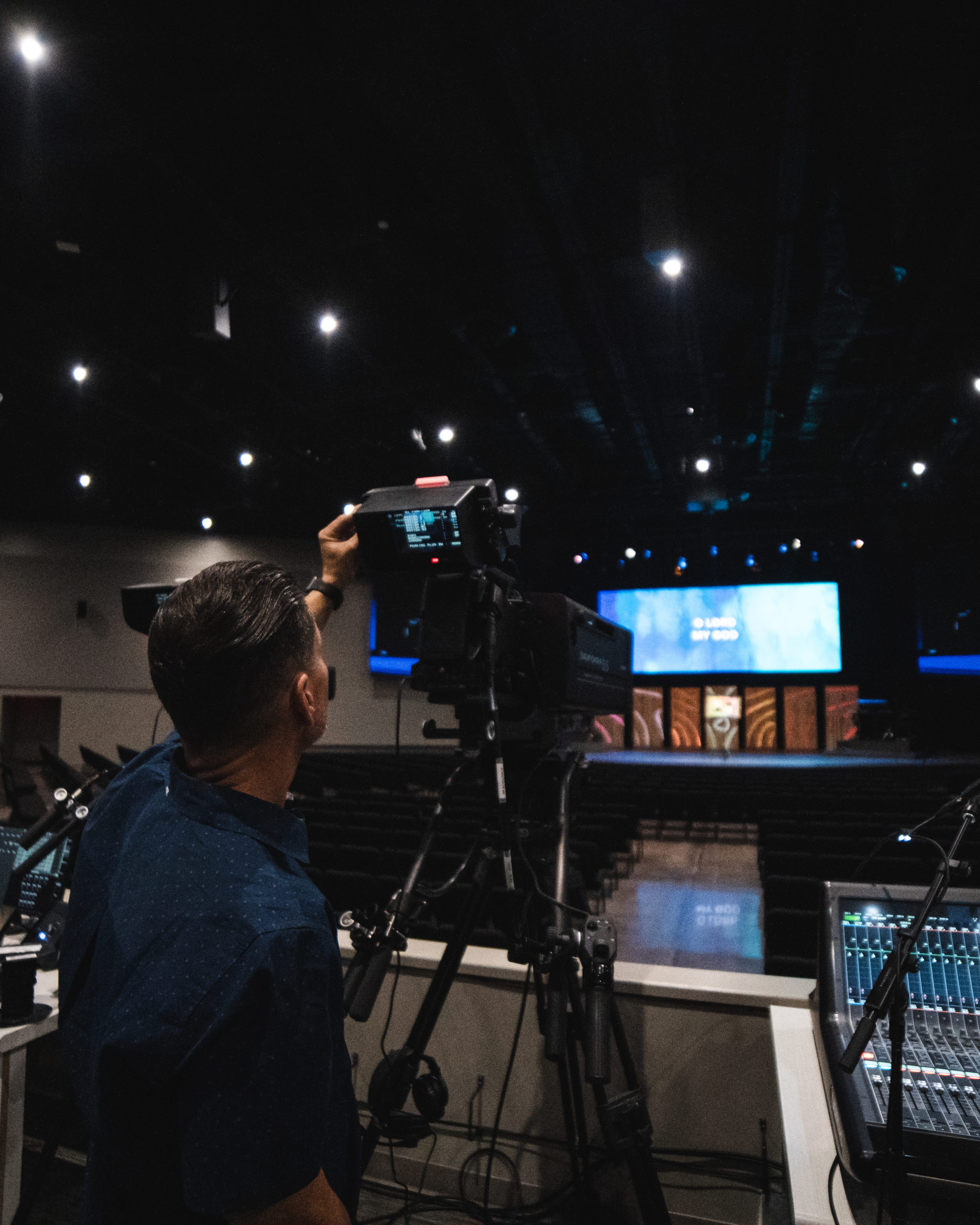How to Best Train Volunteers for New Church Tech

Photo courtesy of David Leuschner. At TechTeach, a Texas Tech University program, students learn about video technology and its ties to student learning.
Here’s a scenario: Your church has just installed a new audio mixing console. The church’s demands of working audio, video and lighting gear are often heavily placed on volunteers. Training is, therefore, crucial to their success.
Are you thinking about having your volunteers fully trained on the new console after one training, just one day before its first service? It wouldn’t be the first time a church took that path. Achieving success under those circumstances — that’s a different story.
“Some leaders have unrealistic expectations,” said Doug Hood, president of CSD Group, an AVL design/build firm based in New Haven, Indiana. “While some volunteers have a high aptitude for technology, there are leaders who expect an integrator to show up and spend a few hours training on a Saturday.”
That unreasonable expectation often goes beyond just getting up and running for that first service, though.
“It’s not just having the volunteer sound person mix the next day on Sunday, but just as they have for the last 25 years,” he added.
Taking Training a Step Further
Learning the ins and outs of a significant piece of gear is ideal in preparing for the next service. David Leuschner, executive director of Digital Great Commission Ministries, said training should go well beyond that extent. Based in Colorado Springs, Colorado, the organization works with churches to show them how to utilize technology effectively.
“I like to keep training at a high level,” said Leuschner. “One should recognize that people will eventually learn every single knob by playing with it [the console]. I find that if you get super technical right away, you will likely scare off volunteers.”
When seeking the best training approach, both Hood and Leuschner said to avoid training large groups at one time.
“It’s most effective to train with the smallest group possible,” said Hood. “What’s productive is keeping it to those that are going to use the equipment with a basic knowledge of AV.”
If the church’s tech volunteers have significantly different experience levels, it’s best not to train them together at the same time.
“If you have people who’ve done this for five to 10 years, as well as novices or beginners, you’ll have to talk to each of them differently,” he added.
For Leuschner, the size of training a single group is workable up to a point. Your training plan needs to change when the group becomes too large.
“I like training … the staff and volunteers together,” said Leuschner. “That doesn’t work, though, when you get past a certain size. When you get past 20, it gets pretty difficult.”
How Training Has Undergone Recent Change
Over the past year, churches have contended with various challenges because of the pandemic. This includes how tech leaders must keep their teams well trained without typical in-person training.
As churches move forward, the help of technology is viewed as a starting point, not a wholesale alternative.
“Nothing replaces in-person training,” explained Leuschner. “There’s something to be said to be able to touch and feel [the equipment].”
Nonetheless, “You can get people 70 to 80 % of the way there through videos.”
Among the benefits of prerecorded video content, Hood said, “It gives volunteers a foundation before bringing them for training. Videos are a good compromise [to in-person learning] with a growing library of tutorials done on your own time.”
Another option for keeping volunteers up to speed is using the tech available in phones, Leuschner and Hood noted.
“It’s not the same as standing in the room,” admitted Hood. “With Facetime or Zoom, though, you can do a lot.”
For staff concerned about needing to produce high-quality training videos, “You can record a sequence using your phone,” Leuschner said. “For example, you can show how to set up a mix in a three-minute video for volunteers.”

Photo courtesy of Doug Hood. A volunteer adjusts a Sony HXC-FB80HN video camera in the worship space at The Summit Church’s Capital Hills campus in Raleigh, North Carolina, recently, after the church underwent an extensive, audio, video, lighting and broadcast upgrade project.
Who to Turn to for Effective Volunteer Training
When it comes to deciding who will train your church’s volunteers, “The integrator should provide commissioning and training no matter what,” Leuschner said. “That should come with what you are paying for.”
For a church to train its volunteers well, it must go well beyond that extent, he added.
“In bringing in outside groups, there’s no bias toward particular gear or integrator to train your team,” Leuschner said. “They will feel free to get the right answers and give the time it takes to get you fully trained.”
To Hood, it is pertinent for the installer to coordinate detailed training on the new equipment.
“They should not only train you on the mechanics of the gear,” explained Hood. “They should answer, Why do we have this gear? And, Why did we decide on this piece?”
Hood cautioned against training with someone other than the installer, saying, “They might not know how something’s connected.” Pairing with the installer will allow for more concise training.
“They [the installer] can tell you, if you hear a strange noise, what room to go to,” Hood detailed. “They will have an intimate knowledge of the overall system as it relates to the building and the infrastructure.”
How Soon Can Your Volunteers Be Trained?
When training a volunteer on newly installed gear, the mindset is too often, How soon can they learn? Getting a volunteer trained on the basics of new equipment is one thing. At what point they will be comfortable becomes a whole other story.
“You could train a new person — a novice — within an hour, and they are up to speed,” said Hood. If that new piece is an audio console, though, Hood cautioned, “It can be more complicated. They can spend a couple of weekends to practice with it, or even multiple weeks.”
Find Extra Time to Go Beyond Basic Training
To encourage getting comfortable with the new gear via additional self-training, Hood said CSD works with churches to receive major pieces well before installation.
“Even though additional training time is beneficial, hands-on training is integral to the learning process,” Hood said. This step avoids hastily trained volunteers who now have extra time, easing any potential pressure.
“If they don’t get their hands on the equipment, the training isn’t what it should be,” Hood said. “If you can’t show me what you’ve learned, it’s a waste of time.”
To ensure the arranged training is effective, Hood said CSD composes Gantt charts. “They show benchmarks and major milestones beyond the completion of the system,” he explained.
When training on an audio console, Leuschner agreed training should go beyond the basics and be “Over a couple of days. It takes repetition before one feels comfortable. It’s like feeling comfortable driving a car on the highway … it takes a few attempts.”
To Leuschner, “a distraction-free service” is the first milestone he looks for, followed by the “behind the scenes” milestone. “That’s where they don’t feel stressed out mixing and switching with lighting. As if it’s an instrument of worship and not a technical piece of gear.”





